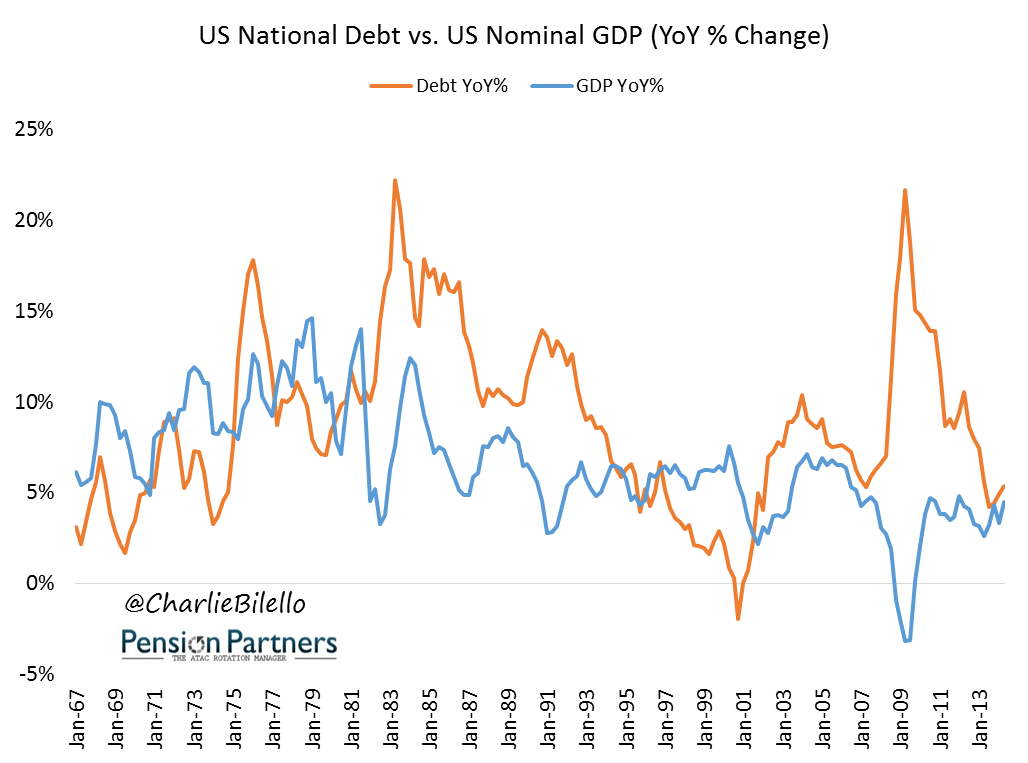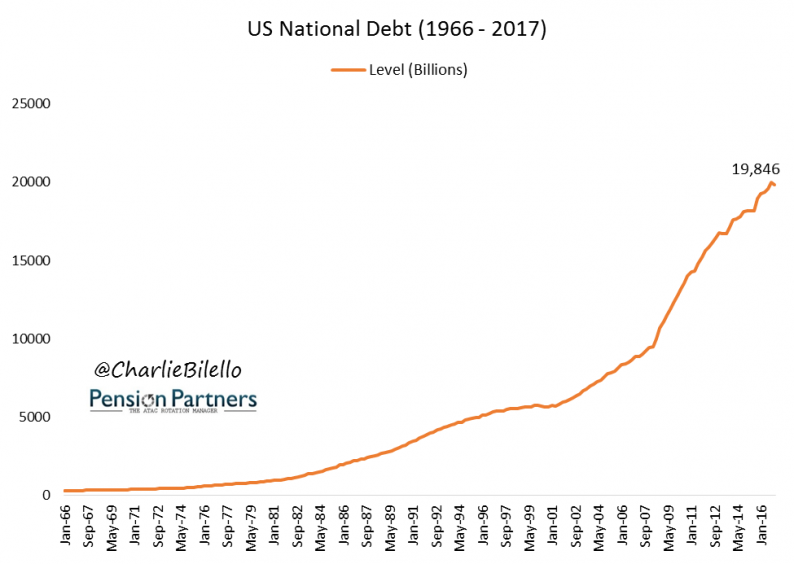U.S. National Debt continues to rise and many investors are afraid. This fear is nothing new; it has been around for decades.
Is it rational for equity investors to fear rising debt levels? Let’s take a look.
First, some background.
Since 1966, the U.S. National Debt has risen in each and every calendar year. Through Democrat and Republican administrations – the one constant has been more debt – from $320 billion in 1966 to nearly $20 trillion today. With a current budget deficit north of $600 billion, the national debt clock continues to tick higher.

National Debt as a percentage of GDP is moving higher as well, most recently coming in at 104%. Just 10 years ago this ratio stood at 62%. You have to go back to 1995-2000 to find a period where the ratio was trending lower for any sustained period of time.

Why is the ratio moving consistently higher? For the last 16 years, National Debt growth has outpaced Nominal GDP growth every in every single quarter (on a year-over-year basis). This has been true during both recessionary and expansionary environments, and both Democratic and Republican administrations.

So, were equity investors justified in being concerned with rising National Debt over the years?
Not exactly. U.S. National Debt has increased by 8.4% per year since 1966 and over that time the S&P 500 has advanced 9.7% per year. Clearly rising debt levels by themselves are not an impediment to equity returns.

What about rising Debt as a percentage of GDP?
Again, not exactly. From 1982 to 2016 this ratio moved from 32% to 105%. Over this time period the S&P 500 gained 11.7% per year.
What about large spikes in the debt level. Is that a bearish omen?
Not exactly. The two largest year-over-year increases in National Debt occurred in early 1983 and early 2009 (both >20% increases). Two of the strongest and longest bull markets in history followed.
Interestingly, the National Debt has gone negative year-over-year in only one quarter since 1966. That was in the 3rd quarter of 2000, near the start of the 2000-02 bear market. By the time the bear market ended in the 3rd quarter of 2002, National Debt was once again on the rise (up 7.8% year-over-year).












Leave A Comment